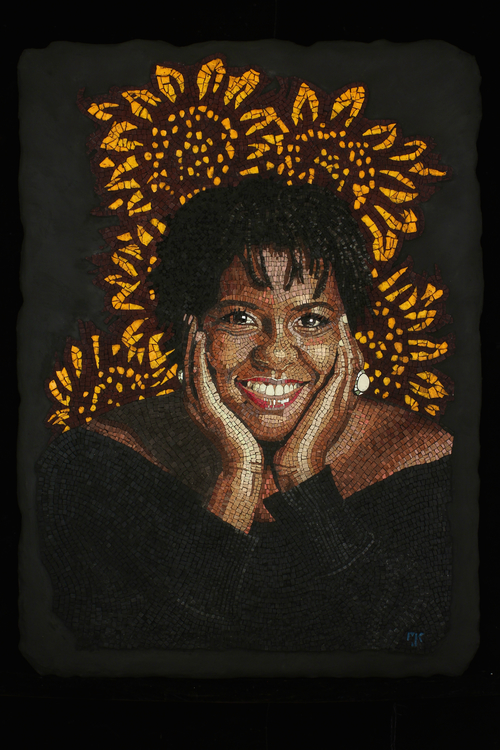
Contemporary Mosaic Art As A Fine Art
Mosaic art is the undiscovered fine art. It is as versatile a medium as oil painting and lends itself to an infinite variety of stylistic treatments. In fact, the vocabulary of mosaic technique is so complex that it was possible for archeologists to determine how many unknown artists worked on a mosaic mural unearthed at Pompei simply by the signature style used by each artist. Why then is mosaic the most under-represented medium of fine art in the United States?
Fine art mosaic is rare, particularly in the US, for several reasons. Significantly, these reasons have little to do with the capacity of the medium to express an artist’s individual vision and style.
Mosaic as Architectural Application
From its beginnings in ancient Greece, mosaic was used primarily as an architectural element like fresco painting or bas-relief sculpture. Being heavy and immovable, great works of mosaic art could not be transported to galleries or readily exchanged. Thus, a culture of collecting and speculating on mosaic art did not develop the way it did for fine oil painting over the last few centuries. The marketplace did not cultivate demand, and artists pursued other media.
Mosaics are Time-Intensive
It is no coincidence that most grand works of mosaic date from periods when household slave labor was plentiful. A mosaic can take weeks or months to complete, while it is possible to complete an accomplished oil painting much more quickly. Mosaic involves cutting stone or glass or ceramic materials, and hand setting pieces that are often tiny.
Cost and Availability of Mosaic Materials
Oil paints and brushes are not cheap, but at least these materials are offered by local art supply stores. When mosaic materials are available in the US, they are usually expensive, and the selection is extremely limited or not suited for making detailed images.
Architecture in the US
Most housing in the US is made of wood-frame construction. Consequently, mosaic is better represented in southern Europe, Latin America, North Africa and other parts of the world where buildings are typically constructed from stone, cement or masonry. In the US, would-be mosaic artists aren’t exposed to the media.
Mosaic as Craft
In the US, craft is a devalued term, and for good reason. When someone who has never worked with their hands becomes disenchanted with their career, one of the typical outlets pursued is a craft. While the patient amateur is perfectly capable of producing amazing work, all too often the effort is half-hearted, even frantic, with speed of completion being the driving concern. Mosaic is generally regarded to be a “craft” of this sort because it is “quick” and “accessible”. After all, nearly anyone can glue broken china to a flower pot in a few hours, and this sort of quickly-executed mixed media seems to be the only form of mosaic art commonly seen in the US. (Keep in mind that this criticism is particularly severe considering that the author is a self-taught mosaic artist who loves mixed-media mosaic.) But what about more serious efforts at mosaic?
Is mosaic art any more accessible than oil painting? To the contrary, it is easy to argue the opposite may be true. Mosaic can be unforgiving, particularly to the novice attempting a figurative picture, and a firm grasp of the image to be portrayed is required because details cannot be added later by the light stroke of a brush. Also, it is not nearly as easy to create a desired color by mixing component colors, at least not until the artist becomes more experienced with the materials and learns how to create color gradients. In short, mosaic, like oil painting, has intrinsic strengths and weaknesses, and there is a vocabulary of techniques that need to be mastered before an artist can take full advantage of the media.
Planning and Investment
Due to the investment of time and materials required, and certain entrenched attitudes, mosaic tends to serve as a second-hand medium where artisans reproduced existing works of art. Mosaic isn’t commonly thought of as a medium of exploration. However, stone and other materials have a language all their own. When the design process takes place in the media itself, the results are unique, powerful and expressive.